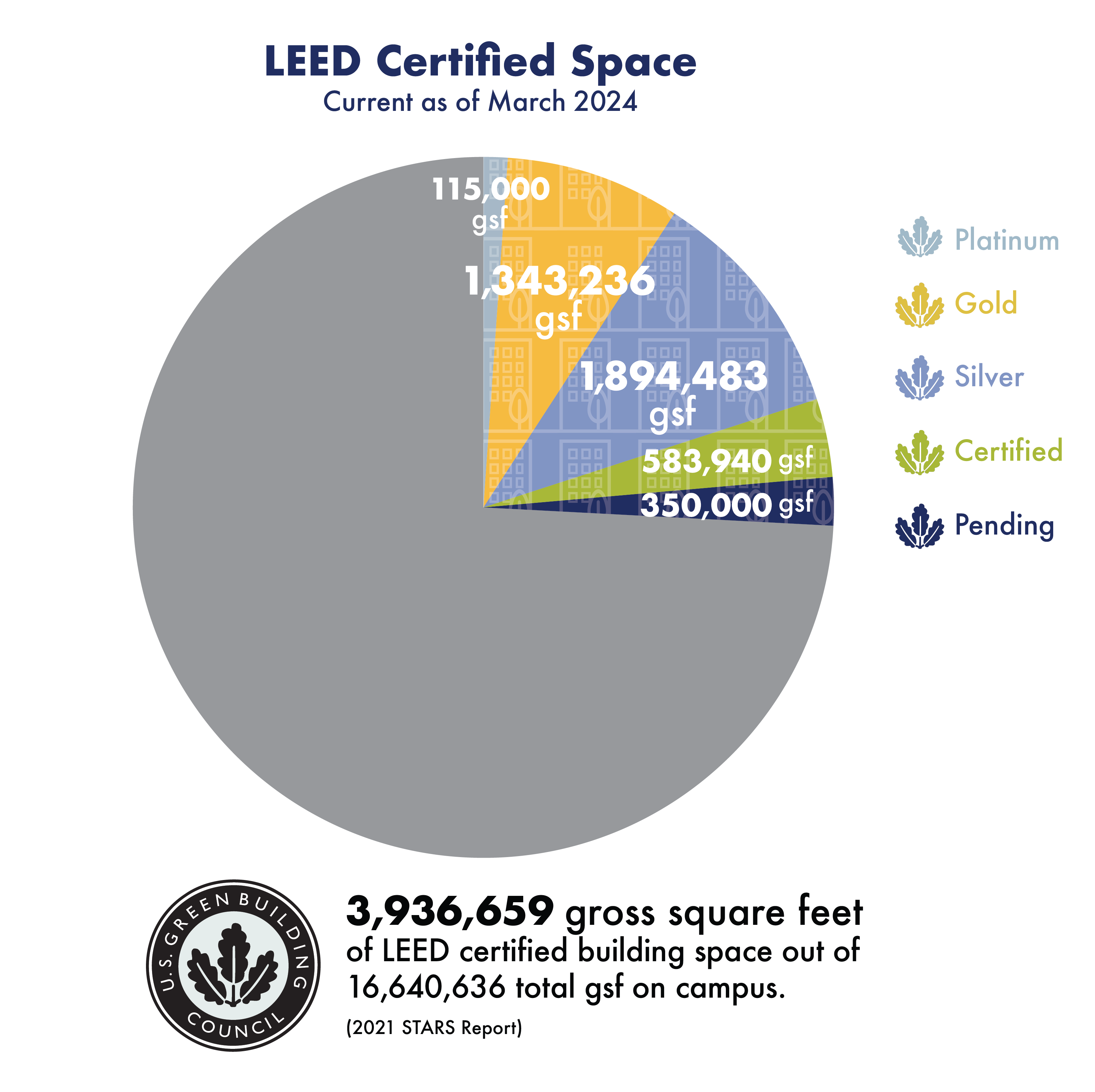According to the Environmental Protection Agency, the residential and commercial buildings sector accounts for 31% of the total U.S. Greenhouse Gas Emissions including electricity end-use indirect emissions, making sustainable building one of the most important things an institution can do to reduce its carbon footprint and positively impact our local and global community. Research has linked sustainably-certified buildings with enhanced student testing performance and improved health outcomes. Emory’s commitment to sustainable building reflects the University’s values, ethics and commitment to excellence.
So Far
- In 2002, Whitehead Medical Research Building became the first LEED-certified building constructed in the Southeast.
- In 2005, Emory’s Goizueta Business School becomes the first building in the country to achieve LEED Gold for existing buildings.
- Completed in 2017, Emory University Hospital Tower is the first Emory Healthcare building to become LEED-certified.
- Completed in 2019, the Emory Student Center is the first Emory building to earn LEED Platinum.
- In 2024, Emory’s Health Sciences Research Building (HSRB-II), Georgia’s largest health sciences research building, achieved LEED Gold
- Campus Services maintains the list of all of Emory’s LEED-certified buildings and buildings pending certification.
 Click image for a larger view
Click image for a larger view
Emory is a leader in its commitment to sustainable buildings with over 4.25 million gross square feet of space in 40 LEED certified University and Healthcare buildings. Emory’s 2025 Vision adds LEED Silver minimum certification for all renovations, and encourages exploration of other sustainable building standards like Living Building, Fitwel, and WELL.
Today
89%
of construction and demolition waste diverted from landfills in 2024.
4.25
million gross square feet of LEED certified building space
40
buildings built/renovated to LEED standards
Tomorrow
Our plans for the next decade will further our leadership in sustainable building practices and policies. By 2025:
- All new construction on campus will be carbon neutral.
- Major building renovations will be held to a minimum of LEED Silver standards, and roof replacement projects will be cool, green and/or solar.
- In the Emory Student Center, incorporate regenerative architectural standards such as net-zero impact and “living building.”
- Renovate and use iconic buildings on campus such as the president’s home for sustainability education and outreach.
